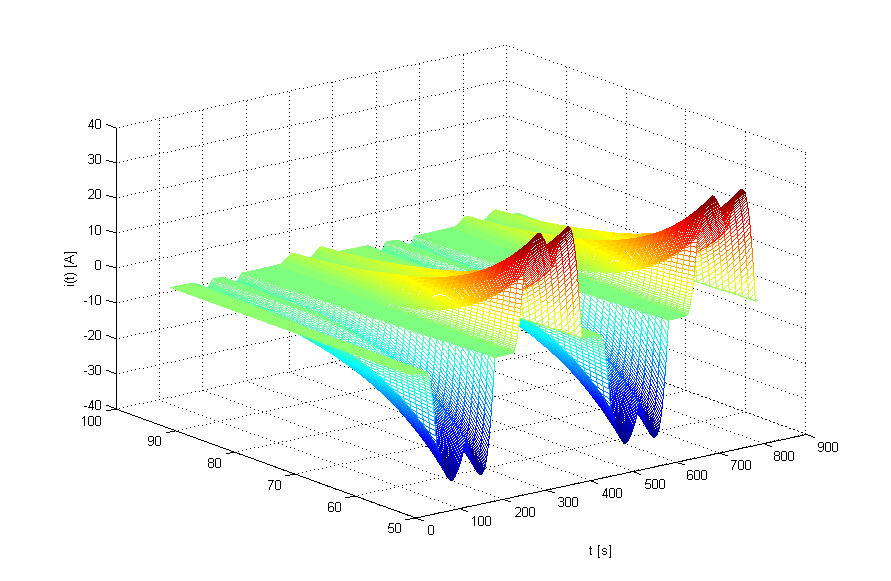Active Filtering (AF) functionality can be understood very broadly. A number of technical solutions could be introduced in grid-tied converters functionality depending on the expected outcome.
1 Local resonance damping
The Wind Turbine (WT) is connected to an offshore array cable system within Wind Power Plant (WPP) electrical infrastructure. The aim of AF is to mitigate or damp internal resonances within the WT Low-Voltage (LV) circuit. It could be mainly resonances caused by shunt-connected Pulse Width Modulation (PWM) filters in connection to series inductance. That would allow other converters (e.g. WTs) in the same power system not to be affected by undamped resonances. In this case the WT is acting as virtual damping circuit.
2 Local harmonic current compensation
It can be seen that WTs inject harmonics into the system to which are connected. The amount of injected current is of course dependent on the system impedance. In that case even small voltage distortion imposed by the Voltage Source Converter (VSC) can cause unacceptable excessive distortion level caused by a resonance circuit within the offshore electrical infrastructure. Furthermore due to already existing harmonic voltage distortion in the system where the WT is connected harmonic current can also flow into the WT internal circuit from the network. The task of AF would be to control the current flow between the WT converter and the external network and e.g. reduce it to minimum.
3 Local voltage distortion mitigation
As mentioned above even small voltage distortion introduced by WT’s grid-tied converter can lead to excessive harmonic current flow in the resonant network to which the WT is connected. The goal of AF would be to improve and minimise as much as possible the voltage distortion level at the converter terminals caused by the power electronics non-linarites as well as limited harmonic rejection capability of the controller. The equivalent voltage source of the VSC would tend to be as less distorted as possible.
4 Unity amplification factor
In many cases when a new plant (e.g. STATCOM) is connected to already existing power systems it is strongly desired that the new plant will not change the harmonic profile after the connection of the existing before system. This can be obtained fulfilling two objectives (i) no harmonic contribution/injection, (ii) no changes in the system impedance at the Point of Connection (POC). The second objective is related to unity amplification factor at POC which can be achieved by AF so the newly connected impedance in not visible to the existing network. Such requirement can be put also to WTs.
5 Resonance damping at the remote bus
Having a number of WTs in WPPs allows also looking on AF in more global way. WTs could be programmed to mitigate prominent resonances in the WPP offshore network, e.g. Offshore Grid Entry Point (OGEP) in the UK or Point of Common Coupling (PCC) in Germany. This would optimize the overall system damping leading to robustness increase of grid-tied converters as well as lower harmonic voltage distortion level. The WTs would operate in groups or clusters and could be understood from electrical infrastructure perspective as an equivalent damped filter.
6 Harmonic compensation at the remote bus
Nowadays it is more and more challenging to meet demanding grid-code requirements, especially in resonant offshore networks with low damping. Therefore the AF functionality in WTs leading to keep the harmonic voltage distortion level at e.g. PCC as specified in the grid-code is critical to assure continuous WPP active power production. WTs could act in groups or individually to achieve that objective, e.g. the 7th harmonic equal or lower than 0.5% at OGEP in the UK or harmonic current injection from all WTs cannot cause higher voltage distortion incremental higher than 0.1% in Germany.
7 Converter controller passivity
In modern WPPs the industry is facing more and more diversification in utilized power electronic devices and their controls. One of examples would be HVDC-connected WPP with multi-vendor WT configuration or HVAC-connected system employed simultaneously with WTs and STATCOMs. That creates even more challenges considering grid-tied converter interaction issues such as stability. Furthermore more complex control structures imposed by AF functionality application requires more focus at the early stage of the WPP system design. Therefore one of potential requirements to the suppliers would be to assure converter passivity within specified frequency range where e.g. where AF is applied. This would secure the robustness of the overall system operation.

